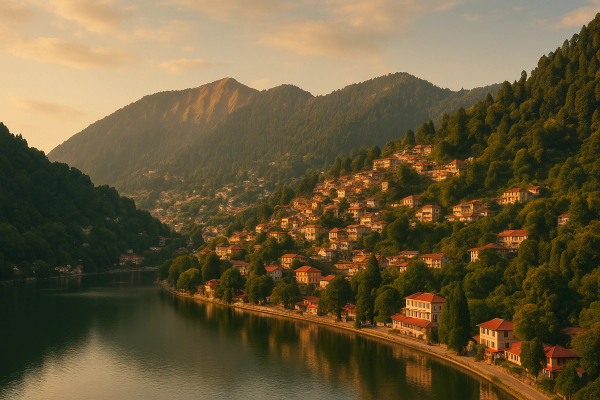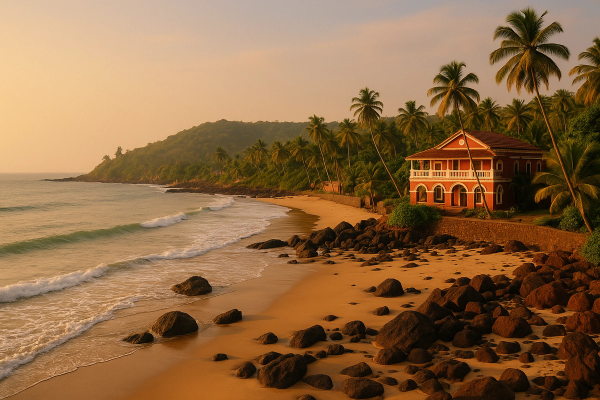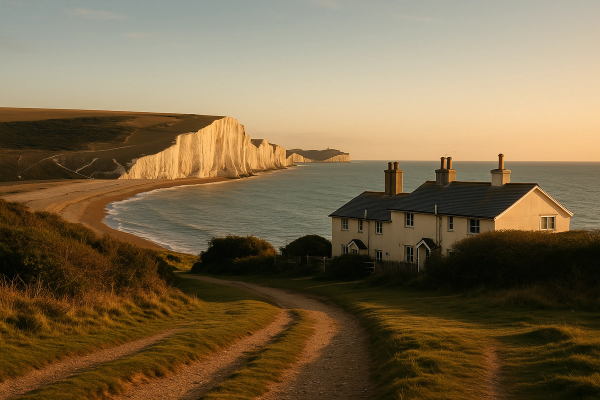
Beyond the Horizon: Discovering Ladakh's Hidden Monasteries and Raw Landscapes#
Imagine standing on the roof of the world, the air crisp and thin, surrounded by jagged peaks piercing an impossibly blue sky. Prayer flags flutter wildly in the wind, carrying whispers of ancient chants across vast, lunar landscapes. This is Ladakh, India – a land of stark beauty, profound spirituality, and thrilling adventure. While places like Pangong Tso and Thiksey Monastery rightfully draw crowds, the true soul of Ladakh often lies tucked away, waiting to be discovered in its hidden monasteries and remote valleys. This Ladakh travel guide is your invitation to venture offbeat India, exploring the lesser-known corners of this Himalayan kingdom, focusing on cultural immersion, adventure travel, and the practicalities of planning an unforgettable Ladakh road trip.¶
For intrepid India travelers, Ladakh offers a unique blend of challenges and rewards. It demands respect – for its altitude, its culture, and its fragile environment. But give it that respect, and it opens its heart, revealing secrets that stay with you long after you've descended from its high passes. Get ready to explore ancient Ladakh monasteries, navigate breathtaking roads, and learn the crucial art of high-altitude acclimatization.¶
Ladakh: A Glimpse into the 'Land of High Passes'#
Nestled between the Karakoram and Himalayan ranges in northern India, Ladakh is a high-altitude cold desert. Its landscapes are dramatic – think barren mountains painted in shades of ochre, purple, and brown, contrasted by startlingly green valleys fed by glacial meltwaters along the Indus and Zanskar rivers. Culturally, it's predominantly Tibetan Buddhist, earning it the nickname 'Little Tibet'. Leh, the capital, sits at a dizzying 11,500 feet (3,500 meters) and serves as the primary hub for travellers.¶
The Ladakhi people are known for their warmth and resilience. Life here revolves around ancient traditions, agriculture (barley, apricots), and the rhythm of the monasteries (gompas), which are not just religious centres but also the heart of community life. Understanding this context is key to appreciating the depth of your cultural travel experience here.¶
When to Visit: Timing Your Ladakh Adventure#
Choosing the right time to visit Ladakh is crucial, as weather dictates road access and overall experience. There's no single 'best' time – it depends on what you seek.¶
Peak Season: Summer (June to Early September)#
This is the most popular time for a reason. The weather is generally pleasant, with warm sunny days (though nights remain cool). Critically, the high mountain passes connecting Ladakh to the rest of India – the Manali-Leh Highway and the Srinagar-Leh Highway – are usually open.¶
- Pros: Best weather for sightseeing and trekking, all roads and internal routes accessible, vibrant atmosphere, major festivals like Hemis Tsechu often fall during this period.
- Cons: Largest crowds, accommodation and transport prices are at their peak, need to book well in advance.
My Tip: Even in summer, pack layers! The sun is intense, but temperatures can drop quickly, especially at higher altitudes or in the evenings.
Shoulder Seasons (May and Mid-September to Mid-October)#
These months offer a good balance. May sees the gradual opening of roads (Srinagar-Leh usually opens before Manali-Leh) and blooming apricot orchards in lower regions. September/October brings stunning autumn colours and clearer skies, though temperatures start dropping significantly, especially at night. The Manali-Leh highway typically closes by mid-October.¶
- Pros: Fewer crowds than summer, potentially lower prices, beautiful landscapes (spring blooms or autumn colours).
- Cons: Weather is more unpredictable, nights get cold, higher passes might close early or late in the season, requiring flexibility in your road trip planning.
Winter Season (Late October to April)#
This is for the truly adventurous. Roads are closed, access is primarily by flight to Leh. Temperatures plummet well below freezing (-20°C or lower is common). However, it offers a unique, serene experience. Think frozen rivers (the famous Chadar Trek happens Jan-Feb), snow-dusted landscapes, and incredibly intimate monastery visits.¶
- Pros: Utter tranquility, unique snowscapes, fewer tourists, specific winter festivals, potential for Chadar Trek.
- Cons: Extreme cold, limited accessibility (flights only), many guesthouses/restaurants closed outside Leh, requires specialized gear and planning.
Journey to the High Passes: Getting There & Around Ladakh#
Reaching this remote region is an adventure in itself.¶
Getting To Ladakh#
- By Air: The quickest way is flying into Leh's Kushok Bakula Rimpochee Airport (IXL). Direct flights operate from Delhi, Mumbai, and Srinagar. Crucially, flying directly to high altitude requires strict acclimatization upon arrival. (More on this below!). Expect flight costs to vary significantly by season (approx. INR 4,000-15,000+ one way from Delhi).
- By Road (The Epic Road Trips): Many travellers dream of the Ladakh road trip. There are two main routes:
- Manali-Leh Highway: Around 475 km, typically takes 2 days with an overnight stop (e.g., Keylong, Sarchu, Jispa). Crosses several high passes over 5000m (like Tanglang La). Stunningly beautiful but challenging. Usually open June to mid-October.
- Srinagar-Leh Highway: Around 420 km, also takes 2 days with an overnight stop (e.g., Kargil). Crosses passes like Zoji La. Generally considered slightly 'easier' than the Manali route in terms of altitude gain, offering better acclimatization. Usually open May to November.
Road Trip Advantage: While longer, driving to Leh allows for gradual high-altitude acclimatization, reducing the risk of AMS compared to flying in directly. Plus, the journey itself is unforgettable!
Getting Around Ladakh#
Once in Ladakh, you'll need transport to explore.¶
- Private Taxi: Most common and convenient option. Leh has a taxi union with fixed point-to-point rates (bargaining usually doesn't work). Hiring a dedicated vehicle and driver for your entire trip offers flexibility, especially for exploring offbeat India locations. Costs vary but expect around INR 3000-5000+ per day depending on the vehicle and itinerary.
- Self-Drive Car/Motorbike: Increasingly popular for adventure travel enthusiasts. Renting bikes (Royal Enfields are iconic) or 4x4s is possible in Leh. Ensure you have the right driving license (International Driving Permit for foreigners may be required) and are comfortable with challenging mountain roads. You'll also need to arrange your own Inner Line Permits.
- Local Buses: The most budget-friendly option, but schedules are infrequent and routes are limited, mainly connecting Leh to major towns like Kargil, Nubra, etc. Not ideal for accessing lesser-known gompas or remote landscapes.
Respect the Altitude: The Golden Rules of Acclimatization in Ladakh#
This cannot be stressed enough: high-altitude acclimatization is essential for a safe and enjoyable trip to Ladakh. Leh itself is at 11,500 ft, and you'll likely go much higher (Khardung La pass is over 17,500 ft!). Acute Mountain Sickness (AMS) is a real risk, with symptoms ranging from headache and nausea to potentially life-threatening conditions.¶
How to Acclimatize Properly:#
- Rest on Arrival: If flying into Leh, dedicate your entire first day (minimum 24 hours, ideally 48 hours) to rest. No strenuous activity, just gentle walking around your hotel or guesthouse.
- Gradual Ascent: Plan your itinerary so you ascend gradually. Don't rush to the highest points like Pangong Tso or Khardung La immediately. Spend a couple of days exploring Leh and nearby lower-altitude monasteries first.
- Hydrate, Hydrate, Hydrate: Drink plenty of water (3-4 litres daily). Avoid alcohol, smoking, and caffeine, especially in the initial days, as they can dehydrate you and worsen AMS symptoms.
- Consider Diamox (Acetazolamide): Consult your doctor before your trip about taking Diamox as a prophylactic. It can help speed up acclimatization but isn't a magic bullet and has side effects. It's a prescription medication.
- Listen to Your Body: Pay attention to symptoms like headache, dizziness, nausea, fatigue, or shortness of breath. If they worsen, descend to a lower altitude immediately. Don't push through severe symptoms.
Crucial Advice: Never ascend further if you have AMS symptoms. Rest at your current altitude until symptoms improve, or descend if they persist or worsen. Your health is paramount.
Beyond Thiksey & Hemis: Discovering Ladakh's Hidden Monasteries#
While the grandeur of Thiksey, the richness of Hemis, and the giant Buddha at Diskit are must-sees, the true magic for many cultural travel seekers lies in discovering Ladakh's lesser-known gompas. These places often require a bit more effort to reach but reward you with tranquility, unique art, and a deeper sense of connection.¶
Venturing Off the Tourist Trail:#
- Phuktal Monastery (Zanskar Valley): This is the ultimate hidden gem, dramatically built into a cliff face around a cave. Reaching it requires a multi-day trek (or a very rough road journey partway followed by a shorter trek) into the remote Zanskar Valley. The isolation is profound, the setting breathtaking. It's a true adventure travel pilgrimage. Best visited July-September when Zanskar routes are most accessible.
- Lamayuru Monastery: Though reasonably well-known, Lamayuru feels otherworldly. Perched amidst surreal 'moonland' geological formations, it's one of Ladakh's oldest monasteries. Legend says it was once submerged beneath a lake. Visit early morning or late afternoon to experience its mystical atmosphere with fewer visitors. Located on the Srinagar-Leh highway.
- Alchi Monastery Complex: Unique and precious. Unlike most hilltop gompas, Alchi sits on the banks of the Indus. Its treasure lies within its ancient temples (dating back to the 11th century) housing stunning Indo-Tibetan murals, distinct from the purely Tibetan style elsewhere. Managed by Likir monastery. Crucially, photography is strictly forbidden inside the oldest temples (Sumtsek and Dukhang) to preserve the fragile artwork.
- Stakna Monastery: Often overlooked, Stakna ('Tiger's Nose') sits atop a conical hill offering panoramic views of the Indus Valley. It's smaller and feels more intimate than its larger neighbours like Thiksey or Hemis. A beautiful spot for quiet contemplation.
- Matho Monastery: Located across the Indus from Stakna, Matho is the only Ladakhi monastery belonging to the Sakya school of Tibetan Buddhism. It's famous for its annual Oracle festival (Matho Nagrang) in February/March, where oracles perform incredible feats while in a trance. Outside the festival, it's a quiet place with impressive thangkas and masks.
Monastery Etiquette: Showing Respect#
Remember these are active places of worship:¶
- Dress modestly: Cover shoulders and knees.
- Remove shoes before entering prayer halls.
- Walk clockwise around stupas (chortens) and mani walls.
- Speak softly and avoid loud noises.
- Ask permission before photographing monks or specific rituals.
- Leave a small donation if you feel inclined; it helps with upkeep.
Crafting Your Ultimate Ladakh Road Trip: Planning for Adventure#
A Ladakh road trip requires careful planning, especially if venturing offbeat.¶
Route Planning & Permits#
A classic circuit is Leh > Nubra Valley (via Khardung La) > Pangong Tso (via Shyok or Wari La) > Leh (via Chang La). This covers major highlights. For lesser-known gompas and landscapes:¶
- Include the Sham Valley (west of Leh) for Alchi, Likir, and Rizong.
- Consider the Leh-Kargil-Zanskar route for Lamayuru, Mulbekh, Rangdum, and the trek to Phuktal (requires significant time and preparation).
- Explore Tso Moriri lake – higher, wilder, and less crowded than Pangong, requiring a permit.
Permits: You'll need permits for restricted areas:¶
- Inner Line Permit (ILP): Required for Indian citizens to visit Nubra Valley, Pangong Tso, Tso Moriri, Dah Hanu villages, etc.
- Protected Area Permit (PAP): Required for foreign nationals for the same areas. Usually obtained through registered travel agents; foreigners must typically travel in groups of two or more (though rules can change – check!).
Permits can be obtained online (recommended) or offline at the DC office in Leh. Keep multiple photocopies as you'll need to submit them at various checkpoints.¶
Vehicle & Essentials#
- Vehicle: High ground clearance (SUV/4x4) is highly recommended, especially for rough roads to Pangong, Tso Moriri, and Zanskar. For bikers, ensure your motorcycle is well-serviced and carry essential spares (puncture kit, clutch cables, etc.).
- Accommodation: Book Leh accommodation in advance, especially in peak season. In remote areas like Nubra, Pangong, Tso Moriri, and Zanskar, options range from basic guesthouses and homestays to seasonal tented camps. Homestays offer fantastic cultural travel insights.
- Packing: Layers are key (thermals, fleece, windproof/waterproof outer shell), sun hat, sunglasses (essential!), high SPF sunscreen, lip balm with SPF, comfortable walking shoes, basic first-aid kit (including AMS medication if prescribed), toiletries, hand sanitizer, power bank (electricity can be erratic outside Leh), offline maps (Google Maps offline or apps like Maps.me), sufficient cash (ATMs are scarce outside Leh).
Where to Stay in Ladakh: Accommodation for Every Traveler#
Ladakh offers a range of stays, evolving rapidly.¶
| Area | Vibe | Price Range (per night, double occupancy) | Best For |
|---|---|---|---|
| Leh Town (Main Bazaar & Fort Road) | Bustling, convenient, access to shops/restaurants | INR 800 - 10,000+ ($-$$$$) | Budget travelers, backpackers, those wanting easy access |
| Leh (Changspa & Karzoo areas) | Quieter, greener, slightly uphill from main market | INR 1500 - 15,000+ ($$-$$$$) | Mid-range, families, those seeking peace near town |
| Nubra Valley (Hunder, Diskit) | Guesthouses, luxury camps, some homestays | INR 1500 - 20,000+ ($$-$$$$$) | Experiencing the valley, camel rides, Diskit monastery |
| Pangong Tso | Regulated campsites (basic to semi-luxury), few concrete structures allowed near lake | INR 2000 - 8000+ ($$-$$$) | Overnighting by the iconic lake (book ahead!) |
| Tso Moriri (Korzok Village) | Homestays, basic guesthouses, few camps | INR 1000 - 5000+ ($-$$$) | Remote lake experience, birdwatching, cultural immersion |
| Sham Valley / Zanskar | Primarily homestays, very basic guesthouses | INR 800 - 3000+ ($-$$) | Offbeat explorers, trekkers, cultural deep dive |
Homestay Highlight: Staying in a Ladakhi homestay, particularly in remote villages, is an incredibly rewarding experience. You share simple meals, learn about local life, and contribute directly to the community.
A Taste of the High Himalayas: Ladakhi Food & Drink#
Ladakhi cuisine is simple, hearty, and adapted to the harsh climate. Don't expect elaborate spice palettes; do expect nourishing warmth.¶
- Thukpa: A comforting noodle soup with vegetables or meat, perfect for chilly evenings.
- Momos: Tibetan dumplings, steamed or fried, filled with vegetables, cheese, or meat. Ubiquitous and delicious.
- Skyu: A traditional pasta-like dish with thumb-sized dough pieces cooked in a hearty vegetable or meat stew.
- Chhutagi: Another pasta dish, bow-tie shaped, often served in a thick soup.
- Butter Tea (Gur Gur Chai): The iconic Ladakhi beverage – tea churned with salt and yak butter. An acquired taste for many, but essential for local hospitality and warmth at altitude.
- Apricot Jam & Juice: Ladakh grows delicious apricots; try the local jams and juices.
Must-Try Experience: Seek out a local kitchen or eat meals at your homestay for the most authentic flavours. Simple roadside stalls often serve excellent Thukpa and Momos.
Essential Ladakh Travel Tips: Know Before You Go#
A few final practicalities for your Ladakh travel guide:¶
- Currency & Costs: Indian Rupee (INR). ATMs are mainly in Leh and Kargil, scarce elsewhere. Carry sufficient cash. Daily budget can range from INR 1500-2000 (budget backpacker) to INR 4000-7000 (mid-range comfort) and upwards for luxury, excluding permits/activities.
- Connectivity: Mobile networks are patchy outside Leh. BSNL and Airtel postpaid often have the best coverage, Jio works decently in Leh/Nubra. Forget reliable high-speed internet outside Leh. Download offline maps and inform family of limited contact.
- Language: Ladakhi is the local language. Hindi is widely understood in tourist areas. English is common in hotels/restaurants in Leh. Learning a few Ladakhi words like 'Julley!' (Hello/Goodbye/Thank you) goes a long way.
- Etiquette: Dress modestly, especially when visiting monasteries or villages. Ask permission before taking photos of people. Be mindful of local customs.
- Visa: International travellers need a valid Indian visa. Check the latest requirements from official Indian government sources or your local embassy well in advance.
Traveling Responsibly in Ladakh: Preserving Paradise#
Ladakh's fragile ecosystem and unique culture are under pressure from increasing tourism. Please travel mindfully.¶
- Minimize Plastic Waste: Carry reusable water bottles (refill stations are available in Leh) and refuse single-use plastics. Pack out all your non-biodegradable waste.
- Conserve Water: Water is scarce. Use it judiciously.
- Support Local Economy: Choose homestays, buy local handicrafts directly from artisans (avoid cheap imports), eat at local eateries.
- Cultural Sensitivity: Respect local traditions, dress appropriately, ask before photographing, and don't intrude on religious ceremonies.
- Respect Wildlife: Do not feed or disturb wildlife. Maintain a safe distance.
Final Thoughts: Answering Ladakh's Call#
Ladakh is more than just a destination; it's an experience that challenges and changes you. The vast, silent landscapes have a way of quieting the mind, while the vibrant culture and ancient Ladakh monasteries stir the soul. Venturing beyond the popular routes to discover its hidden monasteries and raw beauty requires effort – careful road trip planning, patience with high-altitude acclimatization, and a spirit of adventure travel. But the rewards – solitude, authenticity, and unforgettable memories – are immense.¶
Whether you're a seasoned India traveler or embarking on your first Himalayan adventure, Ladakh promises a journey unlike any other. Embrace the challenges, respect the land and its people, and prepare to be utterly captivated.¶
Ready to plan your own Ladakh adventure? Share your questions or your own favourite offbeat India spots in the comments below! For more travel inspiration, check out other travel guides and stories. Julley!¶














